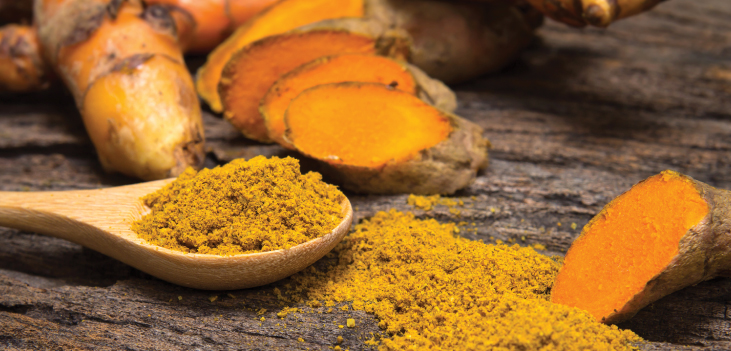We can all agree that Breast Cancer Awareness Month pretty successfully lives up to its name. With ribbons, “walks of awareness,” and the ubiquitous pinkness all around us, it’s safe to say that our awareness gets raised during the month of October. Now that our eyes are open and our consciousness has been engaged, just what can we actually do?
With the knowledge that 1 out of every 8 woman will be diagnosed with breast cancer at some point in her lifetime, we are all compelled to ask, “how can I reduce my risk?” Although we cannot control the environment at large, we can make choices about how and what we eat. With this in mind, here are some suggestions, from scientific literature, that have demonstrated a positive impact on reducing the risk of breast cancer for all women regardless of age or stage of maturation. Incorporating these simple steps is empowering, liberating, and gives all of us a sense of hope in the context of our potential risk.
General Dietary Guidelines
Choose organic when possible and available.
- Organochlorine compounds (OCC) have been implicated in the etiology of estrogen-related disorders due to their estrogenic potential.
Prioritize plant-based foods.
- Phytonutrients such as indoles, sulforaphane glucosinolate, carotenoids, and isoflavones have demonstrated their potentials to lower the risk to cancer in general and to reduce the risk of breast cancer through various cellular and biological mechanisms.
Build your diet on 8-10 servings of vegetables and fruit daily.
- Start with at least 6-7 servings of vegetables a day.
- Try to include at least 1 serving from the cruciferous family of vegetables daily.
- Eat a bowl of salad once a day.
- Include a blended or juice “green drink” daily, or at least 5x week.
- Steam, stir-fry, bake, or roast the remainder of your daily vegetable intake.
- Warm up with a bowl of vegetable soup.
- Snack on raw or dehydrated vegetables with a healthy dip such as hummus or guacamole.
- Choose 2 servings of low glycemic fruits.
- Try to include pomegranate seeds or 1 ounce of unsweetened pomegranate juice several times a week.
Layer in 1 serving of legumes and unrefined whole grains
- Include ½ cup of legumes and ½ cup serving of high fiber whole grains.
Include raw nuts and seeds
- Consume 1-2 tablespoons of flax and chia seeds daily.
- For additional protein and fiber, add in 1-2 tablespoons raw hemp seeds.
- Munch on 2-3 Brazil nuts, 3-4 macadamia nuts, and 8-10 almonds or walnut halves.
Consume 35-45 grams of fiber daily.
- To ensure you reach this goal, include as suggested above — high fiber vegetables, legumes, unrefined whole grains, and raw seeds — in your daily menu.
Garnish your plate with protein.
- Choose from wild-caught fish, organic free whole eggs (if tolerated), organic free-range chicken or turkey, and organic free-range beef, bison, buffalo, or lamb.
Dress your food with healthy fats.
- Include wild-caught fatty fish and other sources of omega 3s such as walnuts and chia seeds.
- Avoid trans-fats and excessive saturated fats.
- Choose organic cold pressed olive oil, coconut oil, or avocado oil for salad dressings, medium temperature cooking and baking.
- Add avocado to your salad bowl.
- Add desiccated, unsweetened coconut to your blended drink.
Flavor your meals with fresh or dried herbs and spices.
Drink at least 10 glasses of alkaline water daily.
Drink 1-3 cups of organic green tea daily.
Ensure adequate vitamin D intake. Supplement to achieve a blood level of about 60 – 70 ug/dl.
Avoid all processed and refined grains, flour and sugar.
- Cancer is a sugar feeder. Refined grains and sugar raise insulin and insulin-like growth factor IGF-1 levels, which stimulate cancer cell growth.
Avoid all processed meat, fish, and dairy foods.
- Even 1 drink a day, such as ½ glass of wine, has been associated with an increased breast cancer risk.
Avoid or limit alcohol consumption.
- Even 1 drink a day, such as ½ glass of wine, has been associated with an increased breast cancer risk.
Other important Lifestyle Choices
-
Ensure adequate sleep.
- Low levels of melatonin, the hormone secreted by the pineal gland and responsible for our sleep/wake cycles, has been associated with an increased risk of breast cancer.
-
Incorporate aerobic exercise daily.
-
In addition, try to include yoga, Tai Chi or Qi Gong 1-2x week.
-
Don’t sweat the small stuff.
- Stress increases the production of cortisol, which results in an increased production of blood glucose. Unless aerobic movement is used to lower the blood sugar level, the increased level will trigger the production of insulin and IGF-1.
The goal of transforming our diets to reduce our potential risk to breast cancer should be incorporated in a way that is not only nutrient dense, but particularly flavorful to ensure compliance over time. Relative to these suggestions, I have provided a recipe as an example of how to blend these powerful ingredients into a delicious and nutritious meal that you can enjoy any time of the day.
Warm Kale, Quinoa and Lentil Salad with Walnuts, Pomegranate and Chia Seeds
Ingredients
| 1 cup rainbow quinoa ⅓ cup red lentils 2 cups water 1 cup organic vegetable broth ¼ cup finely chopped Vidalia or other sweet onion 1 jalapeno pepper, seeded and minced 3 cloves of chopped garlic 1½ teaspoons ground cumin 1 teaspoon curry powder ½ teaspoon chili powder |
½ teaspoon ground cinnamon ½ teaspoon ground coriander ¼ teaspoon ground cardamom ¼ teaspoon ground cloves ½ teaspoon Himalayan salt ½ teaspoon ground black pepper 3 cups chopped kale, rib removed ⅓ cup chopped walnuts ¼ cup pomegranate seeds 2 Tablespoons chia seeds |
Process
- Rinse quinoa under running water for 3 minutes to remove bitter saponins.
- Combine water and broth in a pot and bring to boil.
- Add lentils, chopped onion, garlic, and jalapeno pepper to the boiling liquid.
- Reduce heat to medium, and cook, covered, for 10 minutes.
- In a separate bowl, mix the rinsed and drained quinoa with the cumin, curry powder, salt, pepper, cinnamon, coriander, cardamom, and cloves and add to the lentils.
- Return the heat to a boil.
- Reduce to medium temperature and cook, covered, for about 10 minutes or until the quinoa is tender.
- Add the kale to the pot and cook for an additional 10 minutes or until all ingredients are tender.
- Place in a bowl, allow to cool slightly and garnish with chia seeds, chopped walnuts and pomegranate seeds.
Bon Appétit!
(Original post on boomspot)



